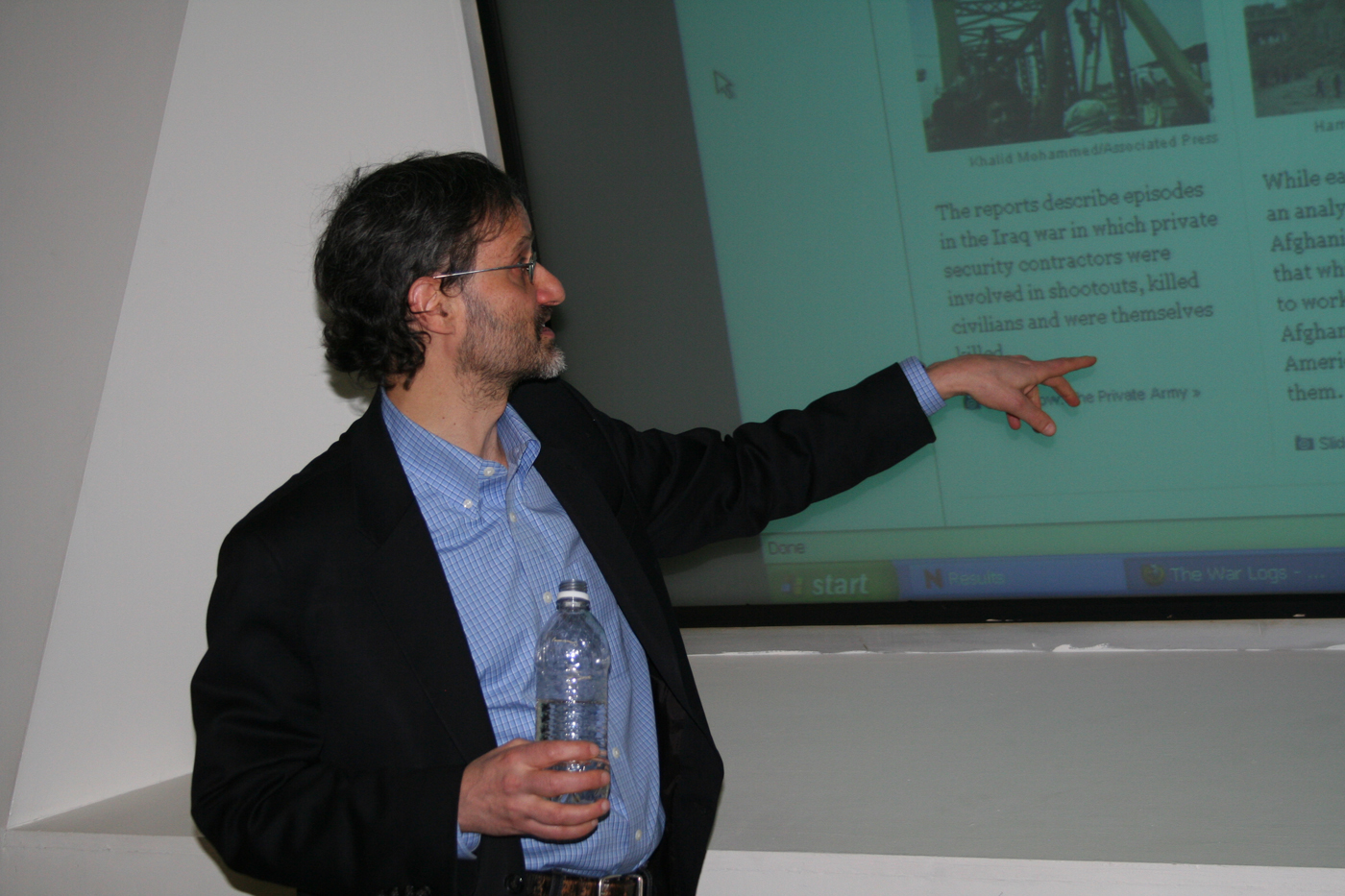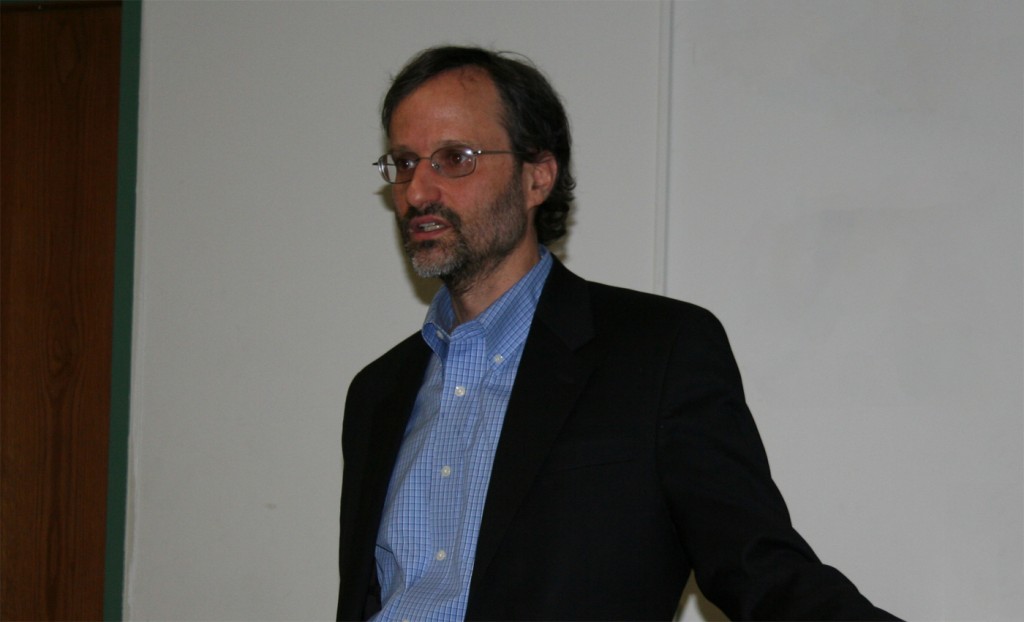

As part of the Ottaway seminar, Emmy-award winning guest professor John Larson invited New York Times reporter Andy Lehren to speak to journalism students and faculty on Wednesday, March 30.
Lehren, who was The New York Times lead reporter on the development of WikiLeaks and following stories, sifted through close to a million documents. Through his work, he was assigned to understand, correlate, search and analyze the assorted materials acquired by The New York Times in July 2010.
Larson said he asked Lehren to speak to students, comprised of the Ottaway class and others enrolled in various journalism courses, because of the close relationship they developed while working together on various award-winning stories.
“Some of the most endearing moments over my career are with Andy,” Larson said. “I couldn’t have approached [the awards] without the amazing work he has done.”
Lehren began his lecture by explaining the situation he was put in when Julian Assange, the director of WikiLeaks, released secret documents to various major publications across the globe.
The first grouping of documents totaled 92,000 and contained information regarding the war in Afghanistan filed by soldiers about any given day. According to Lehren, The New York Times Editor Bill Keller appointed him to be the first person to go through the documents and was sworn to secrecy.
Lehren said he spent his Fourth of July weekend looking through the documents hoping to gather information, which would eventually lead to a story analyzing how many civilians died during the war.
However, after looking at the information, Lehren said he realized the documents were an incomplete set. Missing from the situation reports was information regarding former NFL player Pat Tilman’s death from friendly fire and other high profile incidents.
“The story we were talking about wasn’t going to work,” Lehren said. “The records were incomplete; there was a lot from 2009 and only some in 2008.”
However, Lehren said the documents did give evidence of Afghani citizens cooperating with the United States military and if names of those involved were made public their lives could be jeopardized.
“I was actually looking at something that could endanger someone’s life,” Lehren said.
Coming back from the July 4 weekend, Lehren said he had “six or seven” memos he believed could be investigated further and fleshed out into stories. After meeting secretly in The New York Times building for three weeks, Lehren and a team of journalists turned the 92,000 war logs into a two day series of stories.
“A lot of them didn’t amount to anything that would make a good story,” Lehren said. “It was like stringing pearls.”
When the stories first broke, Larson said he immediately felt the impact and believed the perception of the War in Afghanistan was forever changed because of the documents.
“It felt like a seismic shift, a whole new chapter was being written about Afghanistan,” Larson said.
In October 2010, approximately 400,000 documents relating to the Iraq War were released to the The New York Times and other outlets, which Lehren said was more complete than those received about the Afghanistan War as there were no huge gaps from 2004-2009.
By analyzing the newly acquired set of records, Lehren said he was able to see the scale of 100,000 deaths during the war and was able to give readers a broader perspective of what the documents presented.
Finally, Lehren spoke to members of the audience about the diplomatic cables released by the New York Times in Nov. 2010. The cables, while not top secret, showed information from 274 United States Embassies from around the world.
Lehren and the team of reporters had a nine day series regarding the cables that focused on the most important information to a broad audience.
“We were trying to let the information speak for itself,” Lehren said. “We were also trying to find the things you didn’t know.”
The United States Government was in contact with reporters throughout the process, but Lehren stressed that only instances where lives were in danger were not published in articles.
Third-year public relations major Rhianna Hercules said she enjoyed learning more about WikiLeaks after attending Lehren’s talk.
“I thought it was very interesting to get the perspective of the writer,” Hercules said. “I wasn’t too familiar with WikiLeaks and through this seminar, I found out a lot about it and how others, like New Paltz professors, felt about it.”
